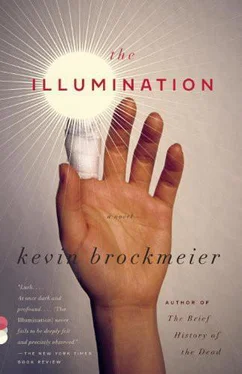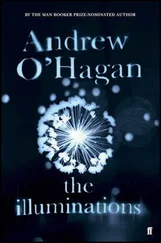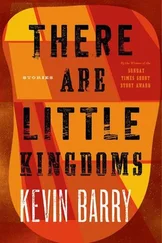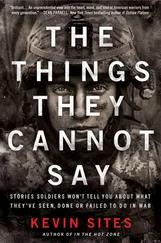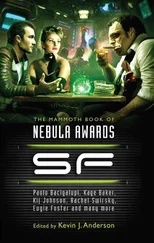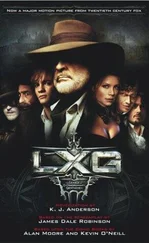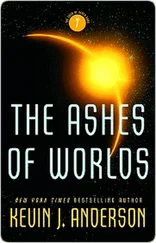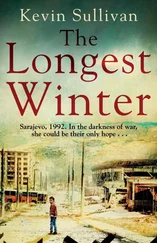That Friday, she had an appointment to get her stitches removed. They were the dissolving kind, designed to be absorbed into her body, but her physical therapist had noticed that the tissue around the threads was inflamed and suggested that she look into having them taken out by a professional. On the highway a car had wrapped itself around a bridge stanchion, spilling blue cubes of windshield glass over the carpool lane. Carol Ann merged into the long line of drivers slowing to gape at the light show, creeping past the police cars, the ambulance, and the curve of orange cones, until her exit opened up and she could punch the gas and speed free of the fold. The hospital revealed itself through the flowing green of the pine trees. She parked and went inside. Soon an orderly in brown scrubs came to escort her into an examination room. The doctor who had lectured her about missing her follow-up appointments, Dr. Miss-Ann-Page, Dr. Misanthrope—she could not remember his real name—arrived to inspect her amputation. In a tone of weary reproach, he told her, “Fortunately for you, the wound has already sealed itself,” and, “Some people have a negative reaction to the proteins in the suture. The result is a poor tissue response. That’s all I’m seeing here, not the world coming to an end,” and finally, as he braced her hand and picked at the knot with a pair of angled scissors, “Now I don’t want any flinching from you, Miss, understand? This won’t hurt a bit.” Surprisingly it didn’t. She watched the thread sinuate through her skin, flashing in and out of sight like a black snake moving through white sand. The first time a doctor ever took her blood, she was not yet three years old, and he had pacified her by telling her that her body was filled with red water, asking, “Did you know that? Would you like to see some?” She had sat there fascinated while he pricked her arm and his syringe filled with cherry Kool-Aid. She felt a similar fascination as she followed the surgical thread passing out of her thumb. Afterward, she was left with only a pale impression of stitches on her skin, barely glowing at all. A few lambent blood-vessel blotches traced the edges, and a checkmark of scar tissue rose above the knuckle. The whole procedure took less than ten minutes.
She was on her way out when Dr. Alstadt chased her down, placing a hand on her wrist. “So how did everything go with Dr. Kimberley?” he asked.
“ Kim berley! That’s it. I think he was angry with me about something.”
“People always think that. He just has this manner. But your thumb is feeling better? You can get back to doing the things you love?”
“Like tying my shoes and brushing my teeth.”
“Exactly.”
She found herself adopting the pose of the woman she wished to be, someone coolly self-deprecating, confident, willing to puncture her own seriousness with a shrug and a wry remark. “My plan is to take it slow, start with one tooth and work my way up.”
“Good idea,” he said.
He smiled nervously, looking down at the chart in his hands. She could tell that he was mustering up the courage to continue.
“Is there something else, Doctor?”
“Actually, yes. We’ve transferred you over to primary care. Officially, you’re no longer on the A&E registry, which means I’m not your doctor anymore. So I was wondering …” He cleared his throat. “We’re not supposed to do this, but I was wondering if you would consider letting me take you out to dinner sometime.”
“Doctor! I don’t even know your first name!”
“It’s Tom. Thomas. Dr. Thomas Alstadt.”
“Dr. Thomas Alstadt.” She indicated the file he was holding. “Is that me you’ve got there?”
He nodded.
“Does it have my phone number in it?”
He nodded again.
She tapped the chart and shifted on her heel and did not glance back until she had left the building. She happened to spy him at the exact moment he stopped watching her. He was turning his face away as an orderly in mocha-colored scrubs approached him with an outstretched hand, and so he did not see the call-me gesture she threw him. But it didn’t matter—she was sure he had gotten the message.
Her legs carried her beneath the blue sky and the pine trees with that drifty roller-skating feeling she remembered from the sunlit summer Fridays of her childhood. She kept replaying the sound of his voice— It’s Tom, Thomas, Dr. Thomas Alstadt —and laughing to herself. Sometimes they rose up inside her, these moments of fierce happiness, kindling out of their own substance like a spark igniting a mound of grass. It was a joy to be alive, a strange and savage joy, and she stood there in the warmth and destruction of it knowing it could not last.
That it was too big for her to contain.
That it would ebb as quickly as it had risen.
And sure enough, late that night, she woke to find that she had not yet finished healing. Her hair was pasted to her forehead, and her hand shone with a sharp pain. She was afraid that it was starting all over again, all the hurt and debility. She could hear the high sustained note of a fever in her ears. Her life was a waste and a failure, and she had never loved another human being, and she wanted nothing more than to escape the planes of her skin and appear in some other place. The world was unreliable. The world could turn on a dime. It was a joy to be alive when it was a joy to be alive, and it was a terror to be alive when it wasn’t. What else had she ever learned?
It was several hours before the light subsided and she was able to fall back asleep. In the morning she drank an extra cup of coffee to clear her head. She did the dishes and watched a few hours of television, and at noon Dr. Alstadt—Thomas—called her to ask if she would be free for dinner that night. She had no other plans, and she started to give him her address, but he interrupted with, “Actually, I already have it. Your chart, remember. I hope that isn’t creepy.”
“I never want to hear from you again. So six-thirty, did we say?”
“Six-thirty.”
That day, grocery shopping, her eye was caught by one of the newsweeklies in the checkout lane. The headline read, “History Is an Angel,” and beneath that, in smaller print, “Bringing Light to the Past.” She decided to buy it. When she got home, she sat down to read the cover story, a long essay about the pictorial history of the twentieth century and how it might have differed had the Illumination commenced a hundred years earlier. It was illustrated with a four-page foldout of famous photos, digitally altered to show new varieties of light emanating from them. A Spanish soldier reeling from a bullet strike, his head ringed in a silver corona. A man in a naval uniform crying as he played the accordion, a bright cloud of grief surrounding his face and fingers. The motorcade in Dealey Plaza, November 22, 1963: the president leaning into the eruption of light at his temple. A group of civil rights marchers hunching against the blast from a fire hose, the tightly contained spray of pain from their bodies matching the tightly contained spray of the water. A young girl with napalm burns running naked in a dazzling aurora. A famine victim staring out of the radiance of her hunger. A dozen men in fire helmets floating like lanterns in a field of smoke. There was a terrible beauty to the images, and Carol Ann found it hard to look away from them. Her job had made her a student of popular imagery. The pictures would be reprinted in all the papers and on all the current affairs sites, she was sure of it, broadcast again and again on all the cable news networks. She began to feel uncomfortable with herself. Maybe she was just another driver who couldn’t stop gawking at a car crash. But then, in this case, wasn’t the car crash hers—or not hers alone, but hers in part, hers along with everybody else’s: the great shared car crash of modern history?
Читать дальше
